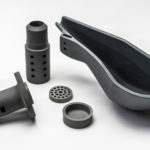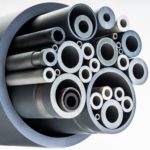Advanced ceramic applications are far-reaching, constantly evolving, and continue to drive innovation in engineering and technology. Different types of advanced ceramics each have specific characteristics, offering a high-performance, economical alternative to traditional materials such as metals, glass, and plastics.
Continue readingTransferring Molten Aluminium Safely with Crucibles & Ladles
Effective manufacturing of finished aluminium products or aluminium castings relies on efficient transferring of large amounts of liquid and solid metal. However, within even the biggest foundries and cast houses there are often instances where operators need to focus on smaller quantities of molten metal and the means of transferring it efficiently and safely.
7 Aluminium Applications & the Foundry Products Enabling Them
Aluminium is an extremely versatile metal with a wealth of applications in a variety of domains, made possible thanks to a range of specialist and technical foundry products that enable them. It is one of the most broadly used metals, second only to iron. This is largely due to its low melting point, malleability at room temperature, and its low density. Aluminium is corrosion resistant and is a good conductor of both electricity and heat.
Continue readingA Review of Light Metal Forming Techniques: Die-casting, Extrusion & More
Light metals are those which have a relatively low density. Some of the most commonly used light metals are aluminium, titanium, and magnesium.
Continue readingMolten Metal Handling: A Guide to Aluminium Processing
As industries across the globe require increasingly high product performance, molten metal quality is becoming more and more important. Aluminium is the second-most consumed metal across the globe and the market produces more than 50 million tons of aluminium every year.
Continue readingSilicon Nitride Ceramics in Key Molten Metals Safety Topics
Foundry operations are inherently dangerous. The production of metal castings is associated with numerous health hazards, including exposure to chemicals, gases, heat, and non-ionizing radiation. It is not uncommon for iron and steel workers to be chronically exposed to polycyclic aromatic hydrocarbons (PAHs), respirable silica, or carbon monoxide (CO). Beyond exposure issues, there are also concerns surrounding molten metal/water explosions and catastrophic component failure due to corrosion, thermal strain, or wear.
Using Advanced Ceramics for Sustainable Innovations—An Applications Insight
Advanced ceramic materials continue to push engineering frontiers, and while there may be an open question about the true sustainability of technical materials from alumina (Al2O3) to zirconia (ZrO), there is no doubt about their impact on clean technology. We have spent the last few articles discussing the impact of advanced ceramic manufacturing on our environment, and their long-term viability in terms of pollution. In this article, we will explore the many exciting successes of sustainable advanced ceramic innovations and applications.
Continue readingAre Ceramic Manufacturing Processes Environmentally Friendly? An Insight into Production
Advanced ceramic manufacturing is a complex multi-step process centring on the consolidation and sintering of raw mineralogical feedstocks. Regardless of the type of ceramic (oxide or non-oxide), or the complexity, shape, size, and structure of the finished part, it is this densification stage of production that unlocks the outstanding thermomechanical properties of technical ceramic materials. It is also, by far, the most energy-intensive link in the advanced ceramics manufacturing chain.
Continue readingAre Technical Ceramics a Sustainable Solution? An Insight into Properties
Technical ceramics have become a mainstay among advanced engineering materials, replacing heavy duty metallic alloys and even refractories in many challenging applications and industries. This stems from their good all-round thermomechanical properties, but can also be attributed to incremental improvements in designing with ceramics and ceramic manufacturing. So, what impact does this shift towards specialist, high-performance material solutions have on corporate and social responsibilities, and sustainability initiatives?Continue reading
How Eco-Friendly are Ceramic Materials? An Insight into Pollution
Ceramics have been utilised by mankind for millennia, mainly due to the abundance of raw materials and the relative ease with which basic pottery can be manufactured. Industrial production is of course more complicated than simple green kiln firing, but even advanced ceramics like aluminium oxide (Al2O3), boron nitride (BN), and zirconia (ZrO2) are derived from source materials that are relatively plentiful on earth. This is often used as an argument in favour of the eco-friendly credentials of technical ceramic materials.Continue reading










